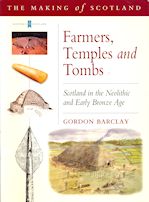This volume represents the publication of a highly successful conference held in 2003
to celebrate the contribution to Neolithic and Early Bronze Age studies
of one of archaeology’s finest synthesisers, Professor Stuart Piggott.
The title is a reference to his famous work,
Ancient Europe from the beginnings of agriculture to Classical Antiquity,
itself a publication of his Society of Antiquaries of Scotland’s Rhind Lectures of 1962.
The scope of the volume spans the three crucial millennia,
from the beginning of the fourth to the mid second,
that saw major impacts on the area we now call Scotland.
There was transformation of the landscape through the introduction and development of farming,
the creation of many striking monuments and the spread of important ideas and technologies,
of which metalworking, particularly in Aberdeenshire, was one of the most significant.
The contributions cover major advances in research in the period
which demonstrate the interplay of the key factors of climate, culture and resources,
where the theme of exchange of information, objects and materials played a vital role.
Individual chapters range from chambered tombs to climate change,
from dietary choices to faience beads, from timber enclosures to bronze hoards.
Together these present a valuable up-to-the minute overview of Scotland in ancient Europe
and a fine tribute to a past-master of the subject.

